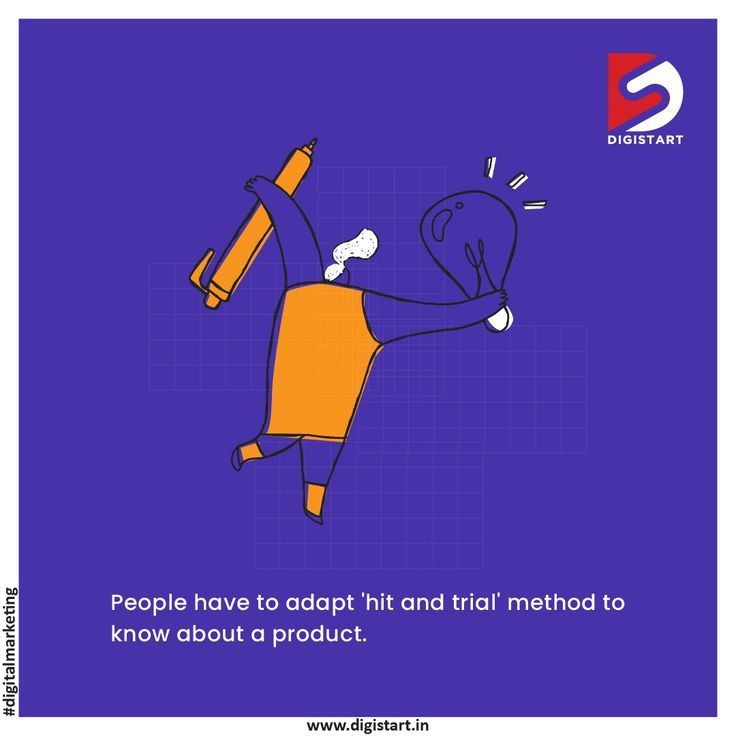Actionable Marketing Insights: Transforming Data into Strategic Decisions
Understand the value of marketing insights
Marketing insights represent to interpret data that reveal meaningful patterns about customer behavior, market trends, and competitive landscapes. Yet, many organizations struggle with what marketers call the” insight to action gap” – the challenge of transform valuable information into tangible business activities that drive results.
The difference between companies that simply collect data and those that leverage it for growth oftentimes come down to establish practices for insight activation. These practices create a systematic approach to ensure insights don’t remain trap in reports but alternatively fuel strategic decisions.
Create an insight to action framework
The foundation of turn marketing insights into action begin with a structured framework that guide the process from discovery to implementation.
Define clear business objectives
Before collect or analyze any data, establish specific business goals that your marketing insights should support. These objectives provide the context need to determine which insights deserve priority attention.
For example, quite than generally seek” customer insights, ” pecify that you need insights about why first time customers aren’t return for a second purchase. This precision help focus your analysis on actionable information.
Establish insight criteria
Not all data points qualify as actionable insights. Create criteria that define what make information valuable sufficiency to act upon:
- Relevance to current business priorities
- Statistical significance and reliability
- Potential impact if address
- Feasibility of implementation
- Alignment with available resources
This filtering system prevent teams from become overwhelm by interesting but finally inconsequential data points.
Develop insight cards
Standardize how insights are document and share across your organization. An effective insight card includes:
- The core insight statement (one clear sentence )
- Support data points and sources
- Business implications
- Recommend actions
- Expect outcomes if implement
- Require resources and timeline
This format transform raw insights into action orient briefs that decision makers can quickly understand and evaluate.
Essential practices for insight activation
With a framework in place, specific practices ensure insights systematically translate into meaningful action.
Implement the insight triage system
Not all insights require immediate action. Develop a triage system that categorize insights base on:
-
Urgent / high impact:
Require immediate action and significant resources -
Important / medium impact:
Should be address within the current quarter -
Interesting / low impact:
Worth monitoring but not require immediate action -
Informational:
Provide context but doesn’t necessitate specific action
This prioritization prevent action paralysis when multiple insights emerge simultaneously.
Conduct insight to action workshops
Regular workshops bring unitedly cross-functional teams to transform insights into concrete plans. These sessions follow a structured format:
- Present the key insights with support evidence
- Facilitate discussion about implications across departments
- Brainstorm potential responses and actions
- Evaluate options base on feasibility and potential impact
- Select the virtually promising approaches
- Assign responsibilities for implementation
- Establish timelines and success metrics
These workshops create share ownership of insights and ensure diverse perspectives inform the action plans.
Create insight action plans
For each prioritize insight, develop a detailed action plan that include:
- Specific actions to be taken
- Required resources (budget, personnel, technology )
- Timeline with milestones
- Responsible individuals or teams
- Success metrics and measurement approach
- Potential obstacles and mitigation strategies
These plans transform abstract insights into operational roadmaps that teams can execute.
Establish insight champions
Designate individuals within each department who serve as insight champions. These team members:
- Advocate for insight drive decision make
- Help translate insights into department specific actions
- Track implementation progress
- Report on outcomes and lessons learn
- Identify barriers to insight activation
This network ensures insights maintain momentum throughout the organization quite than gettingto losee in departmental handoffs.
Technology and tools for insight activation
The right technology infrastructure support efficient insight to action processes.
Insight management platforms
Dedicated software solutions help organizations centralize, organize, and activate marketing insights. These platforms typically offer:
- Central repositories for all marketing insights
- Collaboration features for cross team input
- Workflow tools to track insight implementation
- Integration with data sources and marketing platforms
- Visualization capabilities for insight communication
While enterprise solutions like market logic software and strait offer comprehensive capabilities, smaller organizations can achieve similar results with customize combinations of project management tools and knowledge bases.
Insight dashboards
Create visual dashboards that track both the insights themselves and the progress of their implementation. Effective dashboards include:
- Key insights by business area
- Implementation status and upcoming milestones
- Resources allocate and utilize
- Preliminary results and impact metrics
- Barriers or challenges require attention
These dashboards maintain visibility for insight activation and create accountability for follow through.
Insight notification systems
Implement automate alerts that notify relevant team members about:

Source: blog.datixinc.com
- New identify high priority insights
- Upcoming action deadlines
- Resource allocation requirements
- Changes to implementation plans
- Results from implement actions
These notifications keep insights from being forgotten amid compete priorities.
Create a culture of insight activation
Beyond processes and tools, organizational culture importantly influence how efficaciously insights translate into action.
Leadership commitment
Executive sponsorship remain essential for successful insight activation. Leaders demonstrate commitment by:
- Regularly request insight base justifications for decisions
- Allocate resources specifically for insight implementation
- Recognize and reward successful insight activation
- Participate in insight review sessions
- Share insights in company communications
When leaders systematically value insights, teams throughout the organization follow suit.
Insight storytelling
Transform complex data into compelling narratives that inspire action. Effective insight storytelling:
- Connect insights to human experiences and emotions
- Illustrate the consequences of action versus inaction
- Use visual elements to reinforce key points
- Personalizes implications for different stakeholders
- Create a sense of urgency without manufacture crisis
These stories make insights memorable and motivate quite than but informative.
Insight training programs
Develop training that build organizational capacity for insight activation:
- Workshops on distinguish data from actionable insights
- Skill development for insight interpretation
- Decision make frameworks base on insights
- Case studies of successful insight implementation
- Role specific training for insight application
This investment in capabilities ensure teams can efficaciously translate insights into appropriate actions.
Measure insight to action effectiveness
To improve insight activation over time, establish metrics that evaluate the process itself.

Source: mediatool.com
Insight implementation rate
Track what percentage of identify insights result in implement actions. Calculate this metric by divide the number of insights that lead to complete actions by the total number of insights deem actionable. This measurement highlight potential bottlenecks in the activation process.
Time to action
Measure the average time between insight identification and implementation of related actions. Monitor this metric helps identify delays in the process and opportunities for acceleration.
Insight impact assessment
Evaluate the business outcomes result from insight drive actions. This assessment compares expect results with actual performance and may include:
- Revenue impact
- Cost savings
- Customer acquisition or retention improvements
- Market share changes
- Brand perception shifts
These measurements connect insight activation direct to business results.
Insight utilization survey
Sporadically survey teams to understand how insights influence their decision-making. Questions might address:
- Awareness of available insights
- Perceive relevance to daily work
- Barriers to implement insight drive actions
- Resources need for better insight activation
- Examples of insights that prove valuable
These surveys reveal cultural and practical factors affect insight utilization.
Common barriers to insight activation
Understand typical obstacles help organizations proactively address factors that prevent insights from become actions.
Insight overload
When teams receive excessively many insights without clear prioritization, decision paralysis frequently results. Combat this done:
- Strict insight qualification criteria
- Regular insight consolidation and synthesis
- Clear prioritization framework
- Timing insights to align with decision cycles
Organizational silos
When insights remain trap within the department that generate them, their potential impact diminish. Address silos by:
- Create cross-functional insight review teams
- Establish share insight repositories
- Develop common insight language across departments
- Rotate team members through insight activation workshop
Resource constraints
Yet valuable insights remain unimplemented when resources aren’t available for action. Mitigate this barrier done:
- Build resource requirements into insight documentation
- Create an insight implementation fund
- Develop there implementation options at different resource levels
- Incorporate insights into exist initiative planning
Risk aversion
Organizations sometimes hesitate to act on insights that challenge establish practices. Counter this tendency by:
- Implement small scale pilots to test insights
- Document the risk of inaction alongside action risks
- Celebrate learn from insight implementation disregarding of outcome
- Create safe spaces for insight experimentation
Case study: insight activation in practice
Consider how a mid-sized e-commerce company transform their approach to customer feedback insights:
The company had accumulated extensive customer feedback through surveys, reviews, and support interactions. While reports summarize this data quarterly, few substantive changes result from these insights.
After implement a structured insight to action framework, the company:
- Establish a weekly insight triage meeting with representatives from product, marketing, and customer service
- Create standardized insight cards that include specific action recommendations
- Designate insight champions within each department
- Develop a share dashboard tracking insight implementation status
- Allocate 10 % of quarterly resources specifically for insight drive initiatives
Within six months, the company had implemented actions address 72 % of high priority insights, compare to less than 20 antecedently. These changes result in measurable improvements in customer satisfaction scores and a 14 % increase in repeat purchase rates.
Conclusion: build your insight activation practice
Transform marketing insights into action require intentional practice kinda than occasional effort. Organizations that excel at insight activation develop systematic approaches that:
- Intelligibly define what constitute an actionable insight
- Create standardized processes for insight documentation and prioritization
- Establish cross-functional ownership of insight implementation
- Provide dedicated resources for insight drive initiatives
- Measure both implementation effectiveness and business impact
- Build organizational capabilities for insight interpretation and application
By treat insight activation as a core business practice instead than an afterthought, organizations create a sustainable competitive advantage. In markets where most companies have access to similar data, the difference maker become how efficaciously that data transform into strategic action.
Begin by assess your current insight to action processes, identify the about significant barriers, and implement target improvements in how your organization bridge the gap between know and do. With consistent practice, turn marketing insights into action become not simply a capability, but a define characteristic of your business culture.



